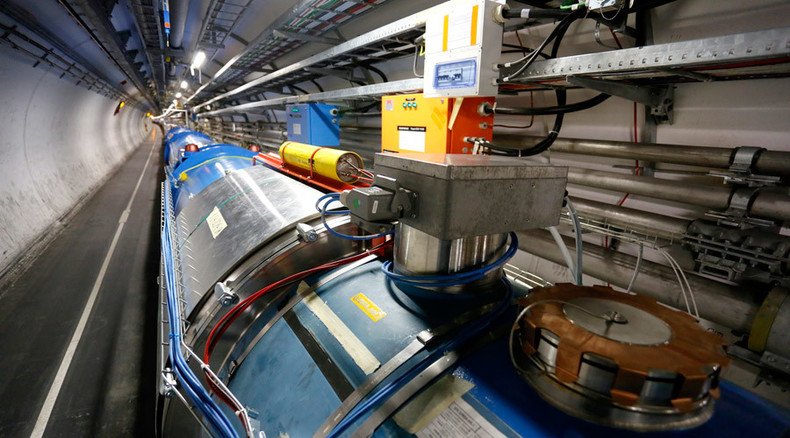Large Hadron Collider creates matter similar to 1st moments of universe at record-high energy

The CERN Large Hadron Collider (LHC) has broken a new record, smashing together lead-ions at the highest energy levels ever. The record-breaking collisions are aimed at studying a state of matter that existed shortly after the Big Bang took place.
The latest accomplishment of the world's largest particle collider saw the LHC smash together lead-ions at 1,045 trillion electron-volts – two times higher than any previous experiment of this kind.
“It is a tradition to collide ions over one month every year as part of our diverse research program at the LHC,” CERN Director General Rolf Heuer said in a press release. “This year however is special as we reach a new energy and will explore matter at an even earlier stage of our universe.”
Shields up! CERN testing superconductor for spaceship radiation deflector http://t.co/TbUxDXXlQNpic.twitter.com/vwnLeEk7eP
— RT (@RT_com) August 8, 2015Scientists at CERN are aiming to examine the state of matter that was present just after the Big Bang took place.
“Early in the life of our universe, for a few millionths of a second, matter was a very hot and very dense medium – a kind of primordial ‘soup’ of particles, mainly composed of fundamental particles known as quarks and gluons,” the press release states.
That matter was a far cry from what is present in today's “cold universe.”
“In today’s cold universe, the gluons 'glue' quarks together into the protons and neutrons that form bulk matter, including us, as well as other kinds of particles.”
By increasing the energy of the lead-ion collisions, the LHC increased the volume and temperature of the “soupy matter,” quark and gluon plasma. The scientists were able to reach a temperature of several trillion degrees.
#RestartLHC Large Hadron Collider at @CERN fired up after 2-year break http://t.co/CwmfQ1lrbJpic.twitter.com/9WHOwet56z
— RT (@RT_com) April 6, 2015The specialists put the heavy-ion beams into collision on November 17, and declared them stable days later. The four large LHC experiments – Atlas, CMS, LHCb and ALICE – will all take data from the experiment.
ALICE collaboration spokesperson Paolo Giubellino noted that there are “many very dense and very hot questions to be addressed with the ion run for which our experiment was specifically designed...for instance, we are eager to learn how the increase in energy with affect charmonium production, and to probe heavy flavor and jet quenching with higher statistics.”
This is the second major milestone for the LHC in just two months. In September, it confirmed the existence of a fundamental symmetry in nature by measuring particle mass and electric charge. Scientists believe the information will help determine which theory on the laws of the universe is most plausible.
The world's largest and most powerful particle accelerator, the LHC consists of a 27km ring of superconducting magnets with a number of accelerating structures. It first began colliding particles on September 10, 2008.












